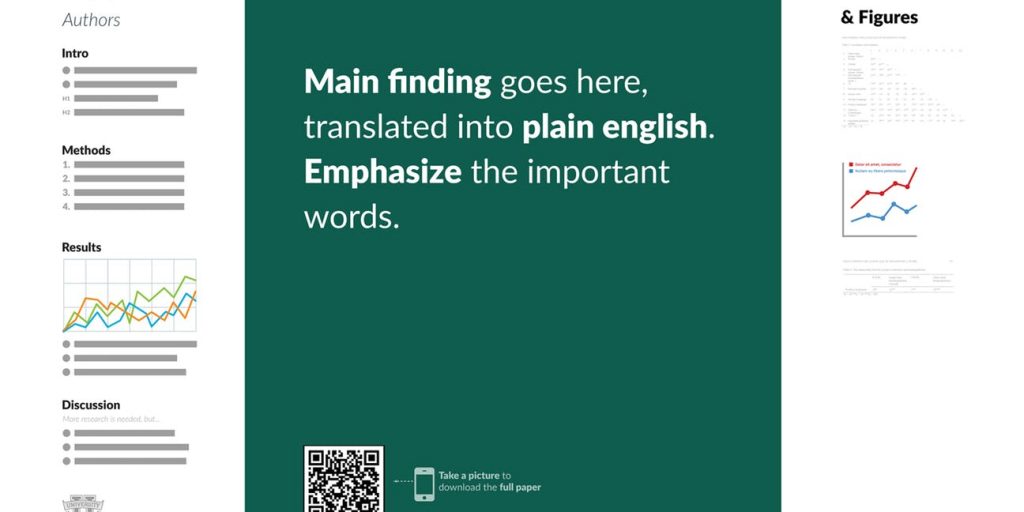From retrievalpractice.org regarding the “Make it Stick” book, this link includes:
- Discussion questions for each chapter
- Sketchnotes for each chapter
- Additional readings and research articles




From retrievalpractice.org regarding the “Make it Stick” book, this link includes:
The process of forgetting starts as soon as learning finishes. Here are 5 research-backed strategies you can use when you absolutely need to make something stick. A video I edited for @edutopia. pic.twitter.com/iYhk2sr9Uk
— stephen merrill (@smerrill777) July 21, 2019
Research Posters Are a Staple of Academic Conferences. Could a New Design Speed Discovery? — from edsurge.com by Jeff Young
Excerpts:
Scholars around the world share their latest research findings with a decidedly low-tech ritual: printing a 48-inch by 36-inch poster densely packed with charts, graphs and blocks of text describing their research hypothesis, methods and findings. Then they stand with the poster in an exhibit hall for an hour, surrounded by rows of other researchers presenting similar posters, while hundreds of colleagues from around the world walk by trying to skim the displays.
…
Not only does the exercise deflate the morale of the scholars sharing posters, the ritual is incredibly inefficient at communicating science, Morrison argues.
…
Morrison says he has a solution: A better design for those posters, plus a dash of tech.
To make up for all the nuance and detail lost in this approach, the template includes a QR code that viewers can scan to get to the full research paper.
From DSC:
Wouldn’t this be great if more journal articles would do the same thing? That is, give us the key findings, conclusions (with some backbone to them), and recommendations right away! Abstracts don’t go far enough, and often scholars/specialists are talking amongst themselves…not to the world. They could have a far greater reach/impact with this kind of approach.
(The QR code doesn’t make as much sense if one is already reading the full journal article…but the other items make a great deal of sense!)
Four research-based strategies every teacher should be using — from cultofpedagogy.com by Jennifer Gonzalez
Excerpt (emphasis DSC):
[Per Jennifer] Cognitive scientist Pooja Agarwal and K-12 teacher Patrice Bain have collaborated on a new book, Powerful Teaching: Unleash the Science of Learning. In the book, they go into detail about what it looks like when we actually apply four research-based “Power Tools” in the classroom: retrieval practice, spaced practice, interleaving, and feedback-driven metacognition—which is one we haven’t covered at all on this podcast. Today I’m going to talk with Pooja and Patrice about these strategies, the research behind why they work, and some ways you can start using them right away in your instruction.
Instead of assigning homework to give students practice with course material, give mini-quizzes at the start of each class that ask 3-5 questions about the prior day’s learning. These should either receive no grades or be given a very low point value, because the goal of these is to reinforce the learning, not measure or grade student work.
In her social studies classroom, Bain used to assign homework most nights, and found that not only was she spending up to two hours a night grading it, it also was doing nothing to help students retain information.
4 Essentials for Learning Space Redesign — from CampusTechnology.com by David Raths
There’s a lot more to creating active learning spaces than bringing in new furniture and moving seats around.
Belief in Learning Styles Myth May Be Detrimental — from apa.org
Many people believe learning styles predict academic and career success, study finds
Excerpts:
WASHINGTON — Many people, including educators, believe learning styles are set at birth and predict both academic and career success even though there is no scientific evidence to support this common myth, according to new research published by the American Psychological Association.
…
Previous surveys in the United States and other industrialized countries across the world have shown that 80% to 95% of people believe in learning styles. It’s difficult to say how that myth became so widespread, Nancekivell said.
Also see:
From DSC:
While I’ve heard and read through the years that there isn’t support for learning styles — and I’ve come to adopt that perspective as well due to what I’ve read, such as the items listed above — I do think that each of us has our learning preferences (as the debunker club mentioned as well). That is, how we prefer to learn about a new subject:
Along these lines…in my mind, offering learning in multiple media and in multiple ways maximizes the enjoyment of learning by a group of people. And now that we’re all into lifelong learning, the enjoyment of learning has notched waaay up in importance in my book. The more we enjoy learning, the more we enjoy life (and vice versa).
In fact, I’m getting closer to the point of putting enjoyment of learning over grades in terms of importance. Grades are a way to compare people/school systems/colleges/universities/etcetera…they are the currency of our current systems…and they are used to “incentivize” students. But such systems and methods often produce game players, not learners.
Recommended books from RetrievalPractice.org
Check out our recommended books and reports that describe research on the science of learning and provide practical tips for classroom teaching.
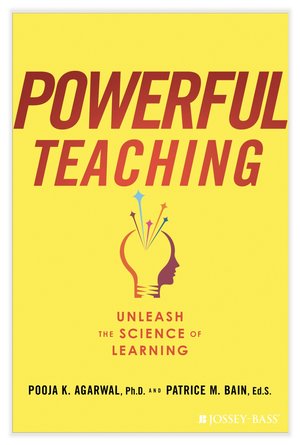
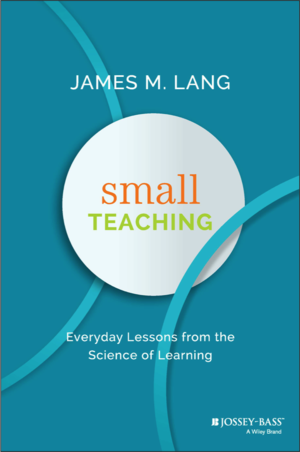
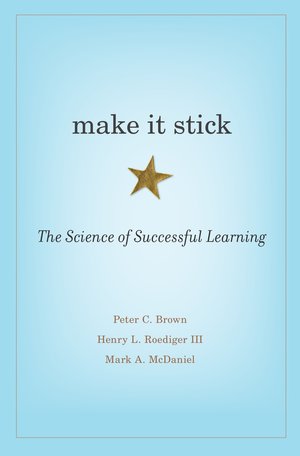
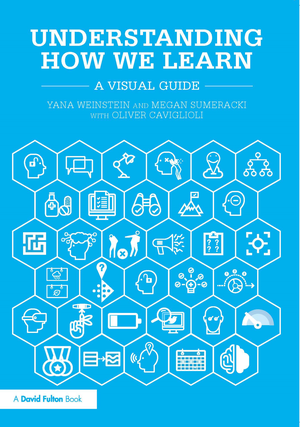
…plus several others
MIT has just announced a $1 billion plan to create a new college for AI — from technologyreview.com
Excerpt:
One of the birthplaces of artificial intelligence, MIT, has announced a bold plan to reshape its academic program around the technology. With $1 billion in funding, MIT will create a new college that combines AI, machine learning, and data science with other academic disciplines. It is the largest financial investment in AI by any US academic institution to date.
From this page:
The College will:
6 key trends to 21st century teaching — from edsurge.com
Excerpt:
It’s popular these days to complain that college teaching hasn’t changed in hundreds of years. And sure, it’s possible to find some professors on any campus holding yellowed lecture notes, or clinging to dusty chalk. But the reality is that the internet and digital technologies have already brought profound changes to instructional styles and tools in higher education.
So what are the new teaching approaches catching on at today’s campuses? And what are the broader cultural changes around college teaching?
We set out to answer those questions over the past year, with a series of articles and interviews exploring what teaching in the 21st century looks like. Some show the nuances of the challenges of teaching with technology by telling stories of innovative professors, including how a water agency official who teaches an online community college course got started in creating open educational resources when her class was incorporated into a zero-cost textbook degree program. Others dive into research on the culture of teaching, like a talk with an anthropologist studying how professors react to (and sometimes resist) research on teaching practices.
Tiny microbots fold like origami to travel through the human body — from digitaltrends.com by Georgina Torbet
Excerpt:
Tiny robots modeled after bacteria could be used to deliver drugs to hard to reach areas of the human body. Scientists at École polytechnique fédérale de Lausanne (EPFL) and the Swiss Federal Institute of Technology in Zurich (ETH Zurich) have developed what they call elastic microbots that can change shape depending on their environment.
The Lesson You Never Got Taught in School: How to Learn! — from bigthink.com by Simon Oxenham (from 2/15/13)
Psychological Science in the Public Interest evaluated ten techniques for improving learning, ranging from mnemonics to highlighting and came to some surprising conclusions.
Excerpts:
Practice Testing (Rating = High)
This is where things get interesting; testing is often seen as a necessary evil of education. Traditionally, testing consists of rare but massively important ‘high stakes’ assessments. There is however, an extensive literature demonstrating the benefits of testing for learning – but importantly, it does not seem necessary that testing is in the format of ‘high stakes’ assessments. All testing including ‘low stakes’ practice testing seems to result in benefits. Unlike many of the other techniques mentioned, the benefits of practice testing are not modest – studies have found that a practice test can double free recall!
Distributed Practice (Rating = High)
Have you ever wondered whether it is best to do your studying in large chunks or divide your studying over a period of time? Research has found that the optimal level of distribution of sessions for learning is 10-20% of the length of time that something needs to be remembered. So if you want to remember something for a year you should study at least every month, if you want to remember something for five years you should space your learning every six to twelve months. If you want to remember something for a week you should space your learning 12-24 hours apart. It does seem however that the distributed-practice effect may work best when processing information deeply – so for best results you might want to try a distributed practice and self-testing combo.
Also see:
Per Willingham (emphasis DSC):
Three Takeaways from Becoming An Effective Learner:
Cumulative exams aren’t the same as spacing and interleaving. Here’s why. — from retrievalpractice.org
Excerpts (emphasis DSC):
Our recommendations to make cumulative exams more powerful with small tweaks for you and your students:
Bottom line: Just because an exam is cumulative does not mean it automatically involves spacing or interleaving. Be mindful of relationships across exam content, as well as whether students are spacing their study throughout the semester or simply cramming before an exam – cumulative or otherwise.
From DSC:
We, like The Learning Scientists encourages us to do and even provides their own posters, should have posters with these tips on them throughout every single school and library in the country. The posters each have a different practice such as:
That said, I could see how all of that information could/would be overwhelming to some students and/or the more technical terms could bore them or fly over their heads. So perhaps we could boil down the information to feature excerpts from the top sections only that put the concepts into easier to digest words such as:
From DSC:
Not too long ago, I really enjoyed watching a program on PBS regarding America’s 100 most-loved books, entitled, “The Great American Read.”
While that’s not the show I’m talking about, it got me to thinking of one similar to it — something educational, yet entertaining. But also, something more.
The program that came to my mind would be a program that’s focused on significant topics and issues within American society — offered up in a debate/presentation style format.
For example, you could have different individuals, groups, or organizations discuss the pros and cons of an issue or topic. The show would provide contact information for helpful resources, groups, organizations, legislators, etc. These contacts would be for learning more about a subject or getting involved with finding a solution for that problem.
…
Such debates could be watched by students and then they could have their own debates on subjects that they propose.
Or the show could have journalists debate college or high school teams. The format could sometimes involve professors and deans debating against researchers. Or practitioners/teachers debating against researchers/cognitive psychologists.
Such a show could be entertaining, yet highly applicable and educational. We would probably all learn something. And perhaps have our eyes opened up to a new perspective on an issue.
Or better yet, we might actually resolve some more issues and then move on to address other ones!
Guide to how artificial intelligence can change the world – Part 3 — from intelligenthq.com by Maria Fonseca and Paula Newton
This is part 3 of a Guide in 4 parts about Artificial Intelligence. The guide covers some of its basic concepts, history and present applications, possible developments in the future, and also its challenges as opportunities.
Excerpt:
Artificial intelligence is considered to be anything that gives machines intelligence which allows them to reason in the way that humans can. Machine learning is an element of artificial intelligence which is when machines are programmed to learn. This is brought about through the development of algorithms that work to find patterns, trends and insights from data that is input into them to help with decision making. Deep learning is in turn an element of machine learning. This is a particularly innovative and advanced area of artificial intelligence which seeks to try and get machines to both learn and think like people.
Also see:
Also see:
LinkedIn’s 2018 U.S. emerging jobs report — from economicgraph.linkedin.com
Excerpt (emphasis DSC):
Our biggest takeaways from this year’s Emerging Jobs Report:
Can space activate learning? UC Irvine seeks to find out with $67M teaching facility — from edsurge.com by Sydney Johnson
Excerpt:
When class isn’t in session, UC Irvine’s shiny new Anteater Learning Pavillion looks like any modern campus building. There are large lecture halls, hard-wired lecture capture technology, smaller classrooms, casual study spaces and brightly colored swivel chairs.
But there’s more going on in this three-level, $67-million facility, which opened its doors in September. For starters, the space is dedicated to “active learning,” a term that often refers to teaching styles that go beyond a one-way lecture format. That could range from simply giving students a chance to pause and discuss with peers, to role playing, to polling students during class, and more.
To find out what that really looks like—and more importantly, if it works—the campus is also conducting a major study over the next year to assess active learning in the new building.
